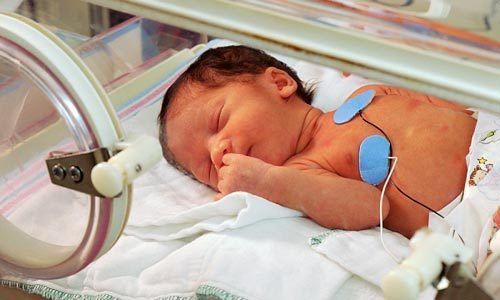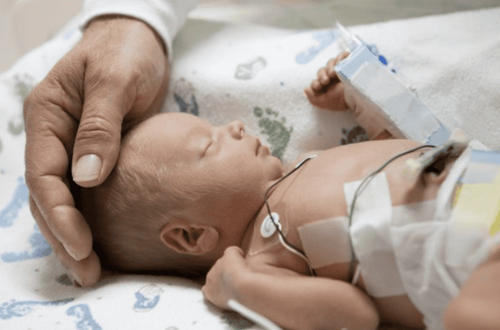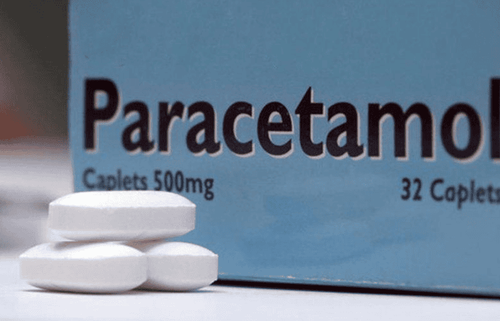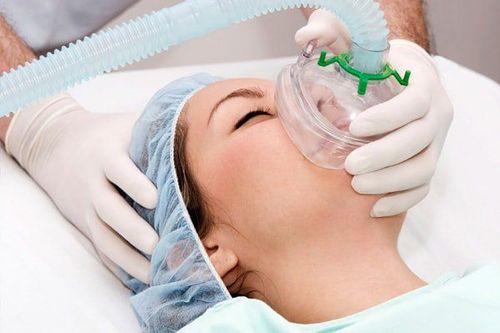This is an automatically translated article.
The article is professionally consulted by Master, Doctor Nguyen Hoang The Nhan - Department of Pediatrics - Neonatology - Vinmec Nha Trang International General Hospital.
Respiratory failure occurs more often in premature babies, the earlier the baby is born, the higher the risk. To comprehensively assess the child's disease condition, it is necessary to combine methods from understanding the medical history, the degree of manifestation of the disease, and paraclinical tests.
1. What is acute respiratory failure?
Acute respiratory failure is a condition in which gas exchange dysfunction in the lungs causes difficulty in gas exchange leading to hypoxia, with or without hypercapnia. This is a common disease in children in the neonatal period, especially in the first days after birth. Respiratory failure accounts for a high proportion of neonatal deaths. Premature infants are more susceptible to respiratory failure than term infants.2. Evaluation factors for respiratory failure in newborns
2.1 Medical history Maternal reproductive history is a major factor in neonatal respiratory distress. Therefore, taking the history will help to effectively assess the disease status.Premature birth: The more premature the baby, the more difficult the prognosis. At this time, children are prone to respiratory failure because they do not have enough time to perfect the organs in the body. Nervous system is not yet complete. Incomplete lungs, lack of surfactant causes endocarditis, weak body resistance, easy to cause infection (pneumonia) Birth asphyxia: Decreased pulmonary circulation function of children Caesarean section : Alveolar fluid is absorbed slowly, causing transient shortness of breath. Cases of premature rupture of membranes, fever before birth, and cloudy amniotic fluid with a foul odor can all cause pneumonia in the newborn. Diabetic mother affects the baby. affect the synthesis of surfactant Children with illnesses such as colds and high fevers both increase oxygen consumption 2.2 Examination of organs Based on clinical symptoms appearing on the body can help determine the extent of the child's illness new-born. Some of the characteristic symptoms include:
Symptoms of tachypnea >= 60 breaths/minute, with apnea lasting greater than or less than 20 seconds accompanied by a decrease in heart rate to < 100 breaths/minute. The chest is indented, rising and falling, the nostrils are whistling, Crimson in some organs such as fingertips and feet Sweating a lot

Khám lồng ngực cho trẻ
Chest X-ray : X-ray images can be used to check lung function Blood gas test : Blood gas test used to check oxygen, carbon dioxide levels in the blood and the presence of excess acid in the body fluids Echocardiogram: This test may be done to determine if a child's heart is functioning normally or showing signs of disease. Peripheral blood smear: This test is done in cases where sepsis is suspected
3. Treatment of respiratory failure in infants
Symptoms of respiratory failure usually appear soon after the baby is born. Babies with respiratory failure are usually cared for in the intensive care unit. Treatment should be carried out promptly to avoid causing dangerous complications because the baby's organs are not supplied with enough oxygen to function.3.1. Surfactant replacement therapy Surfactant replacement therapy is used in children with surfactant deficiency. With this method, surfactant will be introduced into the lungs through the baby's endotracheal tract. The baby will also be placed on a ventilator to help with breathing. Depending on the medical condition, the doctor will decide the frequency and duration of the procedure. This therapy is most effective when given in the first 6 hours after birth.
Surfactant pumping technique would be difficult to perform if the overall standard of care was not of high quality. Vinmec International General Hospital has met strict criteria to apply Surfactant Pump Therapy in the treatment of respiratory failure in infants, including a full range of supportive facilities and a team of doctors to perform. proficient in techniques.
3.2. Oxygen therapy Oxygen therapy is a method of transporting oxygen to the body's organs. Without enough oxygen, vital organs may not function properly. Therefore, a ventilator is used to control the baby's oxygen.
3.3. CPAP Breathing CPAP through the nose is a method of introducing a continuous positive pressure into the airways. The aim is to maintain dilation of the alveoli that tend to collapse and open the collapsed alveoli. A small mask will be placed on your baby's nose during this procedure.
To ease the child's pain, the doctor may decide to use additional pain relievers. Consult with your child's doctor to determine your child's treatment and recovery time.
4. Prevention of respiratory failure in infants

Nguyên nhân chính của suy hô hấp ở trẻ sơ sinh là sinh non
The risk of preterm birth can be reduced if pregnant women take good precautions along with maintaining healthy habits such as gentle exercise, eating nutritious food during pregnancy.
In case if you have to give birth early, your doctor may prescribe corticosteroids to help your baby's lungs grow faster and increase the production of surfactant in the lungs.
Treatment of respiratory distress syndrome is a difficult challenge for newborns. During treatment, the baby needs constant monitoring and care. Therefore, parents should consult a doctor to have the best care measures to help their baby recover faster.
Pediatrics department at Vinmec International General Hospital is the address for receiving and examining diseases that infants and young children are susceptible to: viral fever, bacterial fever, otitis media, pneumonia in children, .... With modern equipment, sterile space, minimizing the impact as well as the risk of disease spread. Along with that is the dedication from the doctors with professional experience with pediatric patients, making the examination no longer a concern of the parents.
Please dial HOTLINE for more information or register for an appointment HERE. Download MyVinmec app to make appointments faster and to manage your bookings easily.













